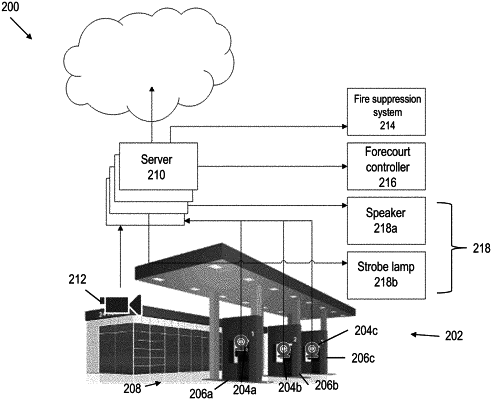| CPC G06V 20/41 (2022.01) [A62C 3/00 (2013.01); G06V 20/176 (2022.01); G06N 20/00 (2019.01)] | 16 Claims |

|
1. A method comprising:
receiving data characterizing a video feed acquired by a camera continuously and automatically gathering images, the camera being oriented toward and including a field of view of a forecourt of a fueling station;
continuously monitoring the video feed for hazards, the monitoring including performing automatic hazard detection on the video feed using at least one predictive model that predicts a presence of a hazard within the forecourt of the fueling station;
transmitting a command to a forecourt controller, the forecourt controller being configured to manage operation of the fueling station, the command causing the forecourt controller to deactivate at least a portion of the fueling station, and the command identifying the at least the portion of the fueling station to be deactivated;
causing a graphical prompt to be shown on an end user device, the graphical prompt being indicative of the predicted presence of the hazard and the graphical prompt including a first response option that designates the predicted presence of the hazard as a false alarm and a second response option for activing a fire suppression system disposed in the forecourt;
receiving, from the end user device, data characterizing a designation, by a user of the end user device interacting with the graphical prompt, of the predicted presence of the hazard as a false alarm; and
training the at least one predictive model by at least providing the data characterizing the designation to the at least one predictive model.
|